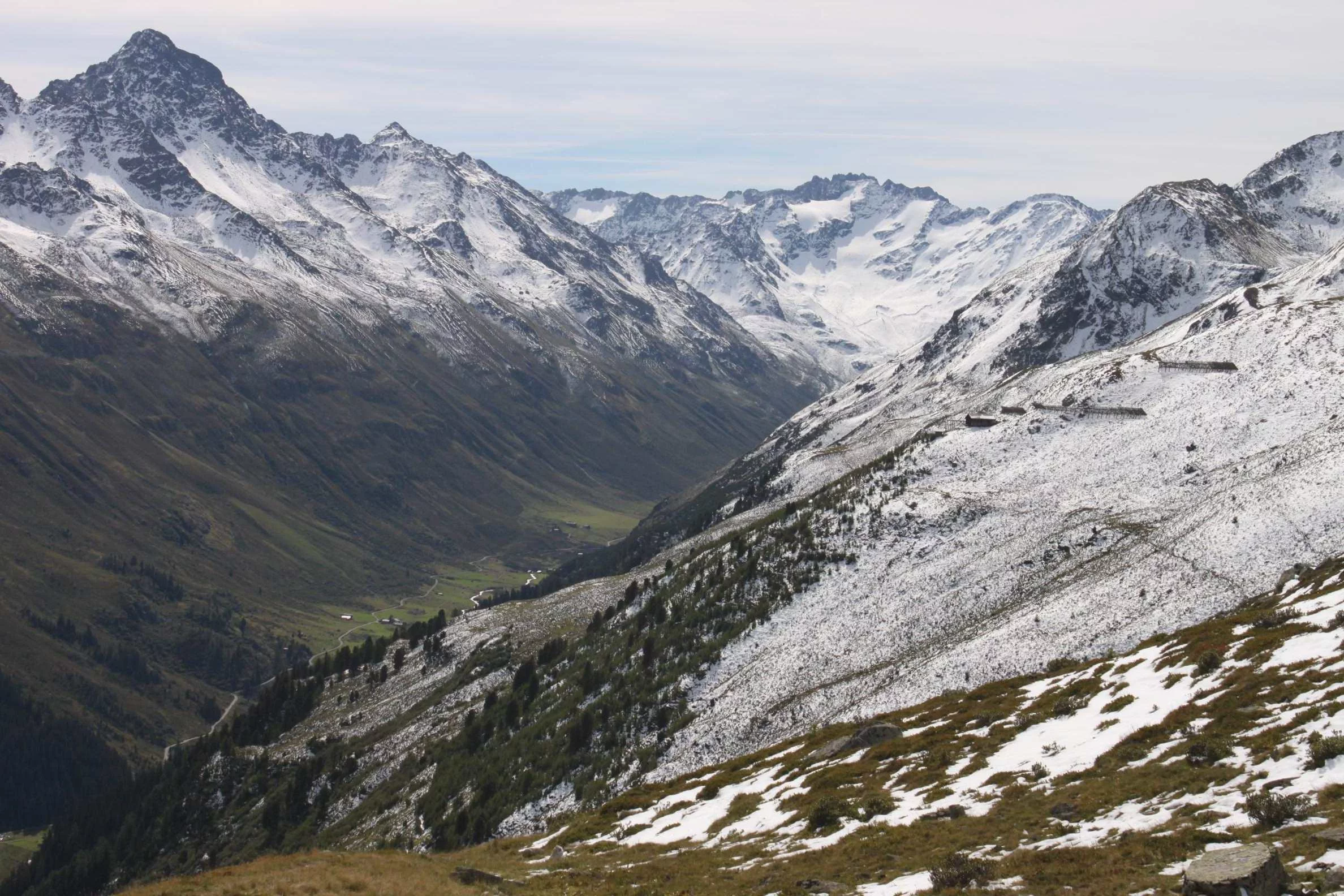Duration: 2009-2012
Contact: Rolf Siegwolf,
Contact: Rolf Siegwolf,
Background
The ongoing global warming combined with increasing availability of CO2 in the atmosphere influence the biogeochemical cycle of carbon. In alpine treeline ecosystems, growth is often limited by low temperatures. These ecosystems respond, therefore, very sensitive to environmental changes. It is not well known, however, whether C gains or losses from these ecosystems will occur. We therefore addressed this question at the alpine treeline of Stillberg Davos (2180 m a.s.l.) in a 35-yr old afforestation containing Larix decidua and Pinus mugo trees. Trees on this site were exposed to Free Air CO2 Enrichment (FACE, 580 ppm 2001-2009, δ13C of added CO2: c. -30‰) and soil warming (+4°C, 2007-2011). Five replications were installed per tree species and treatment combination: control, warmed, elevated CO2, and elevated CO2+warmed. Stillberg is an afforestation of the Swiss Federal Institut of Forest Snow and Landscape (WSL). This study is done in collaboration of WSL, PSI, ETHZ and University of Bale.
Objectives
In this experimental set up we analyzed C and H2O: exchange between tree, soil and atmosphere in three sub-projects and determined the effects of elevated CO2 and soil warming on:
- CO2 and H2O gas-exchange of Larix and Pinus needles (photosynthetic uptake (An), stomatal conductance (gH2O) and δ13C and δ18O of needles and tree rings),
- the transfer and allocation of recently fixed non-structural C compounds (NCC: low-molecular sugars, starch and lipids) through different tissues (needles, bark and wood) within Larix branches in spring 2010 and,
- soil microbial biomass, soil microbial community composition, microbial metabolic activity and the substrate use of soil microorganisms (plant-derived C assimilated before or after 2001 and therefore unlabeled or labeled by the FACE experiment).
Results
Contrary to expectations, Stillberg trees did not acclimatize (down-regulate) maximal photosynthetic uptake (Amax) or reduce gH2O under elevated CO2, thus their transpiration rates remained unaffected and they showed a sustained enhancement of An (Larix: +39% and Pinus: +35%; Streit et al. submitted). Enhanced assimilation must have increased the amount of NCC available for C sink activities such as growth, NCC storage, metabolic respiration and root exudation during the nine years of FACE treatment (2001-2009). In contrast to Pinus, Larix trees were able to utilize additionally acquired C under elevated CO2 for increased basal growth in warm years with early snowmelt, while Pinus needles showed increased starch concentration under elevated CO2 (Dawes et al. 2013). Elevated CO2, further, stimulated C allocation to the decomposer pathway. This triggered a 24% higher soil respiration and 20% higher dissolved organic C leaching from Stillberg soils under both tree species (Hagedorn et al. 2013). Soil warming had no effect on aboveground primary production or belowground sink strength (no stimulation in C transfer velocity; Streit et al. 2013). Within the warmed soil, however, the microbial metabolic activity of soil microorganisms was stimulated by 64%. Additionally, soil warming induced a shift in fungal substrate use towards an increased decomposition of ‘old’ soil organic carbon (‘old’ SOC: plant-derived C assimilated before 2001; Streit et al. in prep). Thus, in our experimental set up at the alpine treeline, elevated CO2 lead to increased C cycling through the plant-soil system, while soil warming stimulated the loss of ‘old’ SOC from the ecosystem.
Publications
- Dawes MA, Hagedorn F, Handa IT, Streit K, Ekblad A, Rixen C, Körner C, Hättenschwiler S. 2013. Alpine treelines in a CO2-rich world: synthesis of a nine year free air CO2 enrichment study. Oecologia: : 171(3): 623-637.link
- Hagedorn F, Hiltbrunner D, Streit K, Ekblad A, Lindahl BD, Miltner A, Frey B, Handa IT, Hättenschwiler S. 2013: Nine years of CO2 enrichment at the alpine treeline stimulates soil respiration but does not alter soil microbial communities. Biogeochemistry: 57: 390-400.link
- Streit K, Rinne KT, Hagedorn F, Dawes MA, Saurer M, Hoch G, Werner RA, Buchmann N, Siegwolf RTW. 2013: Tracing fresh assimilates through Larix decidua exposed to elevated CO2 and soil warming at the alpine treeline using compound-specific stable isotope analysis. New Phytologist: 197(3):838-849. link
- Streit K, Siegwolf RTW, Hagedorn F, Schaub M, Buchmann N. Effects of soil warming and elevated CO2 on carbon and water gas-exchange of Larix decidua and Pinus mugo: growing at the alpine treeline. Plant, Cell & Environment: submitted.
- Streit K, Hagedorn F, Hiltbrunner D, Portmann M, Saurer M, Buchmann N, Wild B, Richter A, Siegwolf RTW. Effects of warming on microbial substrate use in alpine soils. in preparation.


